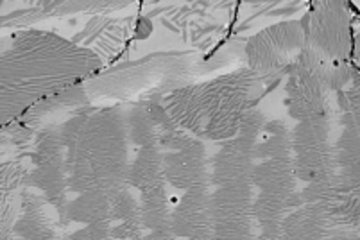All genres
1.
Journal Article
A study on the formation mechanisms of butterfly-type martensite in Fe–30% Ni alloy using EBSD-based orientation microscopy. Acta Materialia 57 (6), pp. 1931 - 1937 (2009)
2.
Journal Article
In-situ Observation of Butterfly-type Martensite in Fe-30mass%Ni Alloy during Tensile Test Using High-resolution EBSD. ISIJ International 49, pp. 1784 - 1791 (2009)
3.
Talk
Investigation of the formation mechanism of martensite plates in Fe-30%Ni by a high resolution orientation microscopy in SEM. ESOMAT 2006, Bochum (2006)
4.
Talk
A study on the crystal orientation relationship of butterfly martensite in an Fe30 % Ni alloy by 3-D EBSD-based orientation microscopy. Microscopy Conference 2005, Davos, Switzerland (2005)
5.
Talk
3D-analysis of the crystal orientation relationship and growth process of lenticular martensite in Fe–30mass%Ni alloy. DPG Frühjahrstagung, Berlin, Germany (2005)











